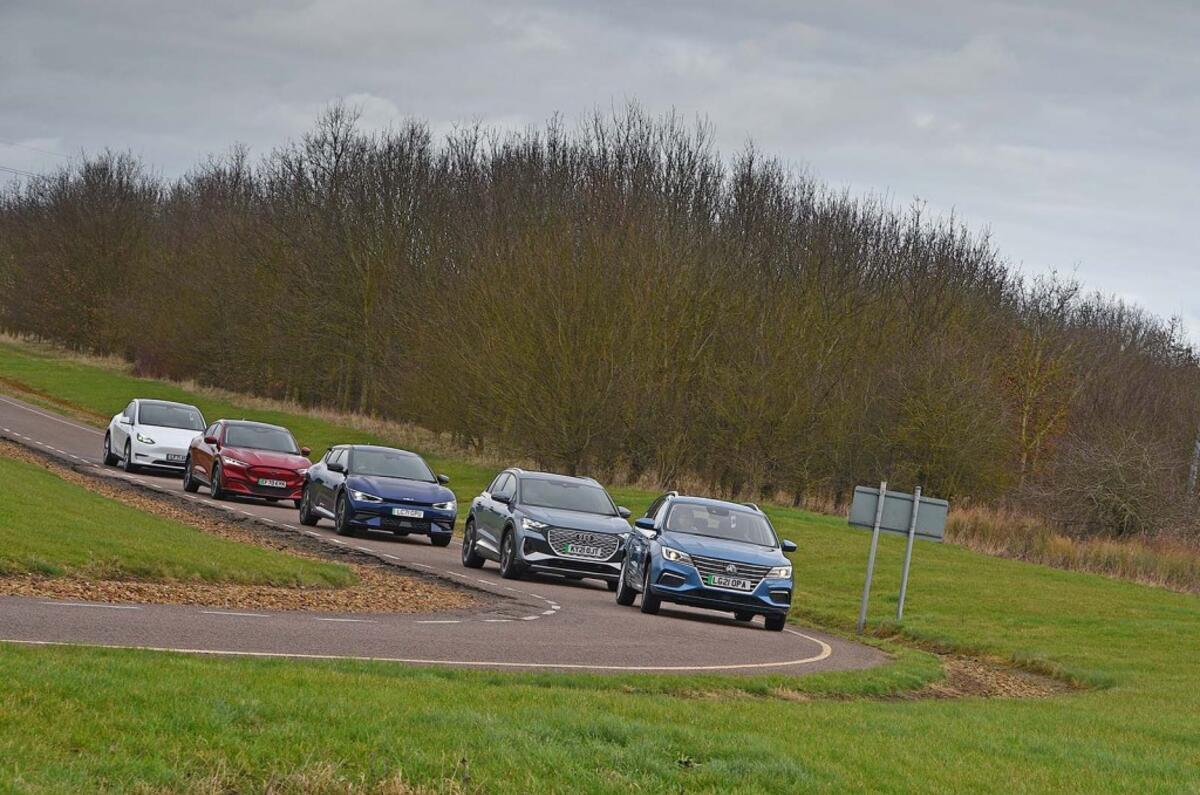Electric car range in winter can be as much as 20% lower than in summer, a new real-world test by What Car? and Move Electric has revealed.
The tests by Autocar's sibling titles were conducted with four identically specced cars driven to a specified route and within defined parameters for driving style at a proving ground last summer and again earlier this month to discover how lower temperatures affect electric car battery efficiency.
In the winter range test, the Porsche Taycan 4S Performance Battery Plus managed 224 miles on a full charge. That’s a 20.1% drop on the 281 miles that the same model on the same-sized wheels achieved when What Car? tested it last summer.
Other models retested included the Ford Mustang Mach-E Extended Range RWD (which fell 18.0% short of its summer figure), the Skoda Enyaq iV 60 (15.7%) and the Fiat 500 42kWh (15.2%).
Significantly, the test also revealed the positive impact of buying an electric car fitted with a heat pump, which reduces strain on the battery by drawing excess heat from the electric drivetrain, distributing it around the interior of the car through the air conditioning.
Electric news in your inbox: subscribe to the Move Electric newsletter
Five models equipped with a heat pump were tested and they fell short of their official WLTP mileage figures by an average of 25.4%. By comparison, five models that relied on a regular interior heater suffered an average deficit of 33.6%.
The tests were conducted on a closed vehicle proving ground, on a 15-mile route consisting of 2.6 miles of simulated stop-start urban traffic, four miles of steady 50mph driving and eight miles driving at a constant speed of 70mph to simulate motorway journeys.
Winter vs summer range test results
Porsche Taycan 4S Performance Battery Plus
Battery size: 83.7kWh; Summer range: 281 miles; Winter range: 224 miles; Difference: 20.10%.
Ford Mustang Mach-E Extended Range RWD
Battery size: 88.0kWh; Summer range: 302 miles; Winter range: 247 miles; Difference: 18.00%.
Skoda Enyaq iV 60
Battery size: 58.0kWh; Summer range: 207 miles; Winter range: 174 miles; Difference: 15.70%.





Join the debate
Add your comment
It's a bit of a no-brainer that a much larger car (where the amount of heat the cabin loses is exponentially disproportionate to its dimensions) will lose more heat than a smaller one. Driving an EV in winter like most people do an ICE one is going to lead to excessive waste of battery energy. Using demisting only when needed and otherwise only using seat and steering wheel (which should be basic equipment on *any* cold-climate-based EV IMO) heaters will minimise losses and maximise range. Of course, motorists will howl with derision at that but with an EV the days of 'free' heating are gone. So hat, coat and gloves for winter motoring (just like we did when I were a lad) and in a car the size of the Taycan you could save as much as 50p/hour of driving (woo-hoo!)... which, of course, is one reason why they are so much cheaper to run. Doh!
The Porsche configurator on the website is pretty honest on this. When you do your build it asks you questions about the environment you'll be driving in, and adjusts the range indication accordingly (as well as for specifying silly size wheels etc).
I notice a few winter vs WLTP figures. It's difficult to achieve WLTP in the summer, so perhaps test them again in July? Were any of these preheated while charging? For balance, how are ICE vehicles adversely affected by the cold?
(p.s. Autocar, fix the damn quote feature)